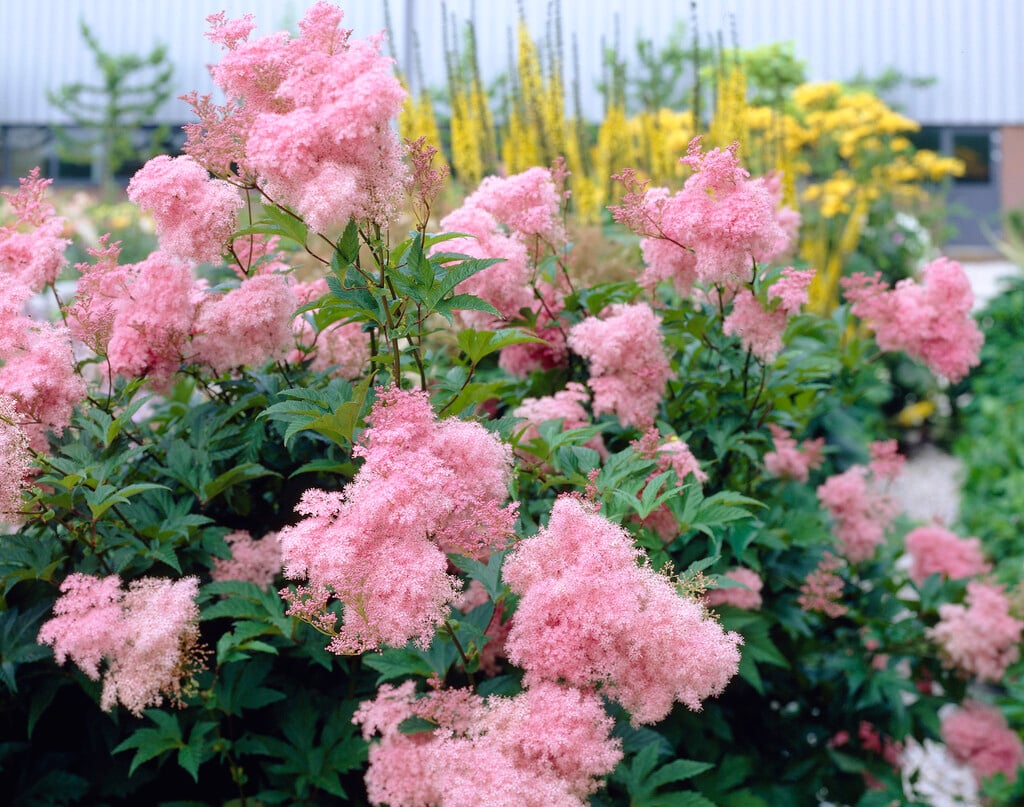Filipendula rubra 'Venusta'
meadowsweet 'Venusta'
An upright, clump-forming, herbaceous perennial with vine-shaped dark green foliage. Clusters of tightly packed dark pink buds open to clouds of small, dark rose-pink flowers with feathery anthers in July and August
Synonyms
Filipendula rubra 'Magnifica'Spiraea venusta 'Magnifica'
see moreFilipendula rubra 'Venusta Magnifica'
Filipendula magnifica

Buy this plant
Size
Ultimate height
1.5–2.5 metresTime to ultimate height
2–5 yearsUltimate spread
0.5–1 metresGrowing conditions
Moisture
Moist but well–drained, Poorly–drainedpH
Acid, Alkaline, NeutralColour & scent
| Stem | Flower | Foliage | Fruit | |
| Spring | Green | |||
|---|---|---|---|---|
| Summer | Pink | Green | ||
| Autumn | Green | |||
| Winter |
Position
- Full sun
- Partial shade
Aspect
North–facing or East–facing or South–facing or West–facing
Exposure
Exposed or Sheltered Hardiness
H5Botanical details
- Family
- Rosaceae
- Native to GB / Ireland
- No
- Foliage
- Deciduous
- Habit
- Clump forming
- Genus
Filipendula are rhizomatous herbaceous perennials with pinnately divided leaves and large sprays of small rosy-pink or white flowers borne on leafy stems well above the foliage
- Name status
Accepted
How to grow
Cultivation
Grow in fertile, humus-rich, moist but well-drained or poorly-drained soil in full sun or partial shade. Can spread and has the potential to become a nuisance if not managed well, so site with care
Propagation
Propagate by seed sown in containers in spring, or by division in spring
Suggested planting locations and garden types
- Cottage and informal garden
- Wildflower meadow
- Flower borders and beds
Pruning
Cut back after flowering
Pests
Generally pest-free
Diseases
May be susceptible to powdery mildews
Get involved
The Royal Horticultural Society is the UK’s leading gardening charity. We aim to enrich everyone’s life through plants, and make the UK a greener and more beautiful place.